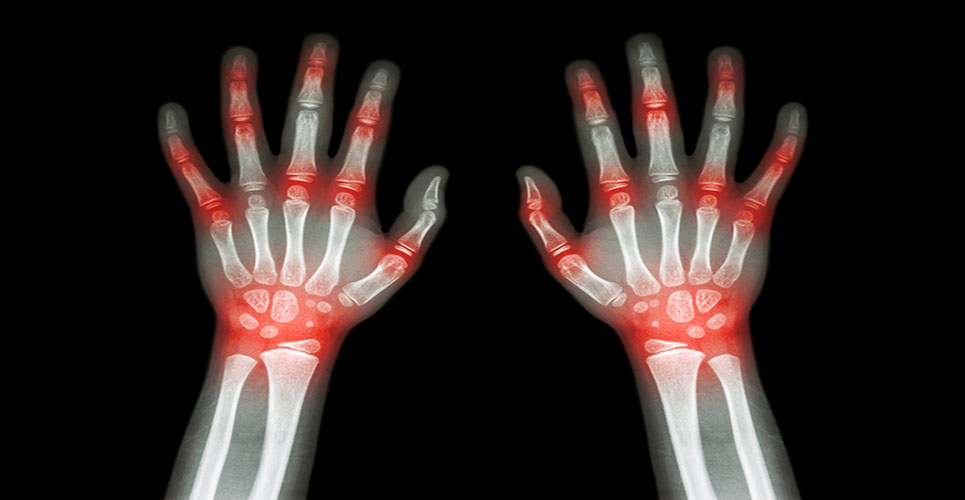MSD announced findings from the GO-AHEAD study (1) showing that patients with active non-radiographic axial spondyloarthritis (nr-AxSpA) treated with injections of Simponi® (golimumab) 50 mg every 4 weeks for 16 weeks had significantly greater improvements in disease activity and inflammation on magnetic resonance imaging (MRI) than patients treated with placebo.
MSD announced findings from the GO-AHEAD study (1) showing that patients with active non-radiographic axial spondyloarthritis (nr-AxSpA) treated with injections of Simponi® (golimumab) 50 mg every 4 weeks for 16 weeks had significantly greater improvements in disease activity and inflammation on magnetic resonance imaging (MRI) than patients treated with placebo.
These data were presented at the 2014 American College of Rheumatology (ACR) annual meeting in Boston, US. Additionally, Janssen Biologics B.V. (Janssen) has also announced that a Type II Variation has been filed with the European Medicines Agency seeking approval of golimumab for the treatment of severe active nr-AxSpA. The application is supported by data from the GO-AHEAD study.

GO-AHEAD was a Phase IIIb, double-blind, randomised, placebo-controlled trial that, for the first time, evaluated subcutaneous golimumab 50mg versus placebo, administered every 4 weeks, in patients aged 18–45 years, with active nr-AxSpA. The primary endpoint of the study was to determine the percentage of patients who achieved at least a 20 per cent improvement in Assessment in Ankylosing Spondylitis (ASAS 20) criteria at week 16. The study also assessed a subgroup of patients who showed objective signs of inflammation (OSI) by MRI or elevated C-reactive protein (CRP) at baseline. This subset of patients comprised approximately 80 per cent of the total population. Golimumab was well tolerated and generally had a favourable benefit-risk profile.
Dr Paul Robinson, Medical Director, MSD UK commented: ‘These results show the value of golimumab in managing the disease activity and inflammation in patients with this debilitating disease, enabling them to function better in their day-to-day activities.’
Key findings
At week 16, ASAS 20 was achieved by a greater percentage of patients treated with golimumab than placebo (71.1 percent versus 40.0 percent, respectively; p<0.0001) and ASAS 20 improvements were also seen in the OSI subpopulation (76.9 percent versus 37.5 percent, respectively; p<0.0001). Similarly, key secondary endpoints at week 16 were attained in more golimumab-treated patients compared to placebo, including:
- ASAS 40 response – All Patients: 56.7 per cent versus 23.0 per cent, respectively; p<0.0001; OSI Population: 60.3 per cent versus 22.5 per cent, respectively; p<0.0001
- ASAS partial remission – All Patients: 33.0 per cent versus 18.0 per cent, respectively; p=0.0136; OSI Population: 34.6 per cent versus 18.8 per cent, respectively; p=0.0204
- Attainment of at least 50 per cent improvement in Bath Ankylosing Spondylitis Disease Activity Index (BASDAI 50) – All Patients: 57.7 per cent versus 30.0 per cent, respectively; P<.0001; OSI Population: 59.0 per cent versus 28.8 per cent, respectively; p<0.0001
Mean Spondyloarthritis Research Consortium of Canada (SPARCC) MRI sacroiliac joint score improvements from baseline to week 16 were also greater in patients treated with golimumab than placebo: -5.3 versus -0.9, respectively in the overall population (P<.0001) and -6.4 versus
-1.2, respectively in the OSI population (P<.0001).
NICE and spondyloarthritis
In the UK, NICE (National Institute for Health and Care Excellence) is currently reviewing the guidelines for the diagnosis and management of spondyloarthritic conditions, including nr-AxSpA. (2) Additionally, a NICE Multiple Technology Appraisal (MTA) is in progress evaluating the use of adalimumab, certolizumab, etanercept, infliximab and golimumab for the treatment of ankylosing spondylitis and non-radiographic axial spondyloarthritis, with publication anticipated in July 2015. (3)
References
- J.Sieper et al. A Randomized, Double-Blind, Placebo-Controlled, 16-Week Study of Subcutaneous Golimumab in Patients with Active Nonradiographic Axial Spondyloarthritis. Abstract 2938. American College of Rheumatology, Boston, 15-19 November, 2014 http://acrabstracts.org/abstracts/a-randomized-double-blind-placebo-controlled-16-week-study-of-subcutaneous-golimumab-in-patients-with-active-nonradiographic-axial-spondyloarthritis/. Accessed November 2014.
- NICE. Spondyloarthritis: the diagnosis and management of spondyloarthritis. Available at https://www.nice.org.uk/guidance/gid-cgwave0688/documents/spondyloarthritis-final-scope2. Accessed November 2014.
- NICE. Ankylosing spondylitis and axial spondyloarthritis (non-radiographic) – adalimumab, etanercept infliximab and golimumab (incl rev TA 143 and TA 233). Available at http://www.nice.org.uk/guidance/indevelopment/gid-tag355. Accessed November 2014.

